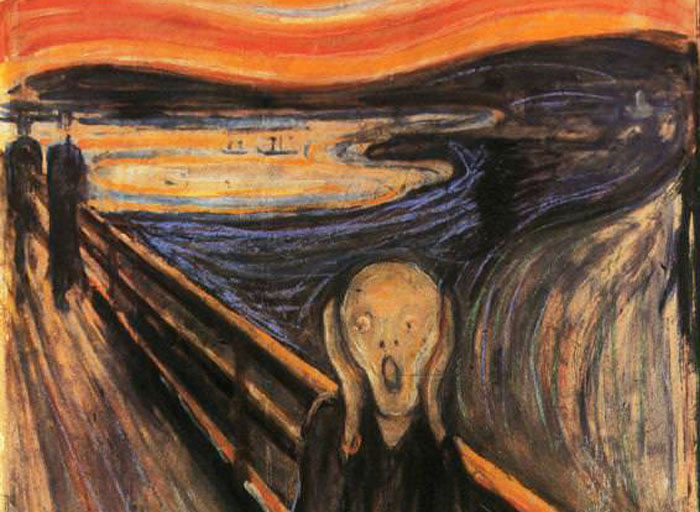
While serving as a volunteer in a leading mental hospital I was horrified to see patients being routinely injected by Thorazine as they continued to stare into oblivion. I saw no signs of rehabilitation being offered to these unfortunate individuals who spent most of their time in isolation. I felt frustrated and disillusioned with the profession and the institution.
Combating the temptation to abandon my volunteer work, I stayed. The other volunteers and employees invited me to join them in the coffee room for idle conversation and snack food, however, I preferred to spend as much of my time interacting with the patients.
There was no such field as art therapy back then, so I didn’t have any resources or tools to guide me. Somehow I invented ways to gain the trust of several patients. I encouraged them to speak, write and draw about their pain and suffering. I listened and observed as they shared shocking images and stories about drug addiction, sexual abuse, poverty, prostitution, violence, and crime.
We were an interesting mixed group coming from different cultural and ethnic backgrounds. Yet, we all bonded through the art of conversation and drawing.
My desire to help people within the confined limitations of the mental health field as it existed then no longer interested me. So, I decided to pursue the field of fine art, arts writing, curating, and helping artists as a career consultant and coach. And, as they say, the rest is history.
As I reflect back on that time of my life as a volunteer in the mental hospital I realize how fortunate I was that the patients gave me permission to enter the private corridors of their mental state — demons and all. They provided an enormous amount of valuable education that no academic course could ever offer to me.
I also learned firsthand how creative self-expression has the potential to help those inflicted with mental illness. There are ways to communicate through art that transcend barriers and limitations and go straight to the heart of the matter.
Times have changed and I’m delighted to learn about many different art programs that serve people who are suffering from mental illness.
Fountain House Gallery Represents Artists with Mental Illness
Several years ago, while working on one of the editions of my book The Complete Guide to New York Art Galleries I discovered Fountain House Gallery, a not-for-profit art venue that represents artists with mental illness. It is the first of its kind and contributes to the well-being of this city’s diverse and vibrant art community. Located at 702 Ninth Avenue and 48th Street, in New York, NY, Fountain Gallery sells original artworks by a range of emerging and established, trained and self-taught artists.
In this gallery artists are encouraged to pursue their creative visions without judgment or the stigma that surrounds mental illness. Its vast network of artists, curators, and cultural institutions is a testament to the growth and credibility of the organization.
Founded in 1948, Fountain House has grown to become a global leader for mental health recovery programs in more than 340 locations in 32 countries. Fountain House/Clubhouse International was the recipient of the 2014 Conrad N. Hilton Prize, the world’s largest and most prestigious humanitarian prize.
For more information visit The Fountain Gallery’s website

Thank you Renee for sharing this interesting side of your life, it is truly impressive. It is not easy to work within this atmosphere. My uncle suffered from PTSD in his 60s. It was heart wrenching and eventually he became paranoid schizophrenic. You used your experience and brought light to those in darkness. This is quite an accomplishment. Fascinating article.
Elaine, Thank you so much for sharing your insight about what the healing power of art means. I agree… Our art, whatever the medium, is a reflection of our state of mind — a kind of visual diary. And the creative process helps us most when we don’t interfere with the process and “go with the flow.”
I like what you say — you feel a meditation-like bliss. How beautiful.
In addition to your website at http://www.elainealibrandi.net/ where else can we see your art?
Best regards,
Renee
Thank you, Renée. People can see my work on Pinterest if they input Elaine Alibrandi.
As a lifelong PTSD sufferer, I know that creating art nurtures me. However, what I find more interesting is how unconsciously I impart my psyche into my works. Stepping back from a finished piece, I’m struck by the underlying emotions…good, bad, or otherwise…that show themselves so readily once a piece is done than while I was working on it. When I’m working, I’m profoundly focused and my mind is completely open, I don’t really feel anything except a kind of meditation-like bliss. It’s only afterwards that I see so plainly where I was psychologically when I was creating the piece.
Also, it’s interesting to me that many of my pieces are in the permanent collections of facilities that help or heal people. I like that.